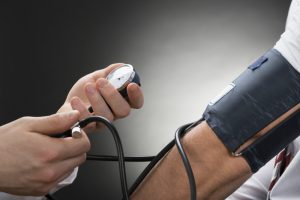
Masked hypertension prevalent in Americans 21 and older: Study
High blood pressure, or hypertension, is more common among Americans 21 years and older than previously thought, according to a new study led by Dr. Joseph Schwartz of Stony Brook University.
The study centered on assessing the prevalence of masked hypertension—that is, hypertension that is not detected in a medical setting. Individuals with masked hypertension have healthy scores when their blood pressure is measured in a doctor’s office, but when measured at home, their levels are often higher and in the hypertension range. Because of this, detecting high blood pressure has become more difficult. To diagnose masked hypertension, patients are required to self-report blood pressure levels when measured outside of the doctor’s office, or wear an ambulatory blood pressure monitor to track and record changes over a 24-hour period. Continue reading…
Cognitive training may aid those with severe tinnitus
A recent study conducted by the Washington University School of Medicine has revealed a potential connection between the effects of severe tinnitus and cognitive training. Dr. Jay F. Piccirillo led the study with the purpose of observing how cognitive training can affect and even aid patients with severe tinnitus in improving their working memory, selective attention, and processing speeds. Issues with these areas—as well as reaction times—are all symptoms associated with severe tinnitus, and to address these issues, Dr. Piccirillo and his associates developed a cognitive training program based on neuroplasticity. The program, called Brain Fitness Program – Tinnitus, consists of 11 training exercises ranging from acoustic stimuli and continuous speech to visual stimuli, and was aimed at addressing and evaluating the attentional effects of tinnitus. Continue reading…
Pain in the middle of the back can put a damper on your day and affect your ability to complete simple tasks. The middle of the back is made up of 12 thoracic vertebrae and their interlocking facet joints and discs, as well as the different muscles, tendons, and ligaments that allow movement. Because this section of the back is attached to the ribs, it is much more rigid and unable to bend and stretch in the way the upper and lower back can, meaning the discs of the middle back do not experience the same level of degradation as those in other areas. Instead, middle back pain is often a result of strained muscles or stressed joints between the ribs and vertebrae. Continue reading…
While most of us are used to our urine being somewhere on the yellow spectrum, sometimes it can be a surprising color and raise concern. If you’ve noticed that you have orange urine and are asking yourself why, continue reading to discover the causes, symptoms, and treatment for this condition. Orange urine can be caused by a variety of factors, some more severe than others. Continue reading…
The most commonly occurring type of stroke, ischemic strokes happen when a blood clot blocks blood flow to the brain. Read on to learn about the different types of ischemic strokes, what causes them, symptoms to look out for, and how they are treated. Depending on the type, ischemic strokes are caused by the formation of blood clots either within a blood vessel that directly supplies blood to the brain, or clots that are formed elsewhere in the body and move through the veins up to the brain. These clots restrict blood flow into the brain and result in impaired cognitive function and stroke. They’re often formed due to a pre-existing condition, such as atherosclerosis, the slow buildup of cholesterol that causes the arteries to narrow and the blood to gather and form clots. Continue reading…